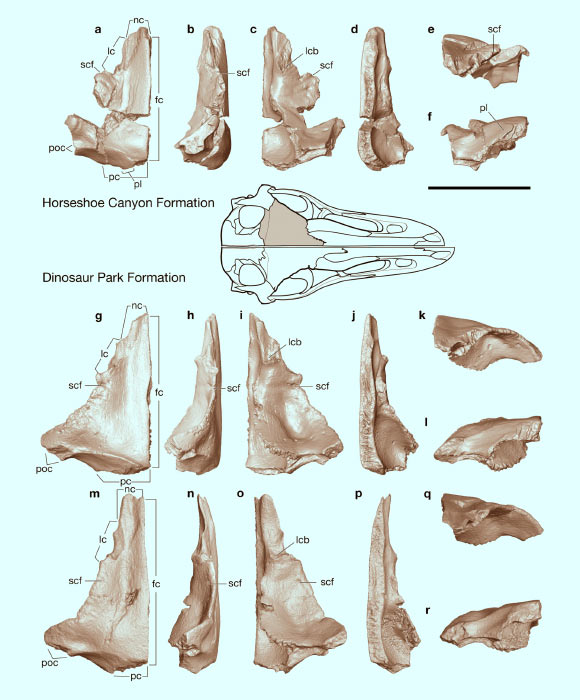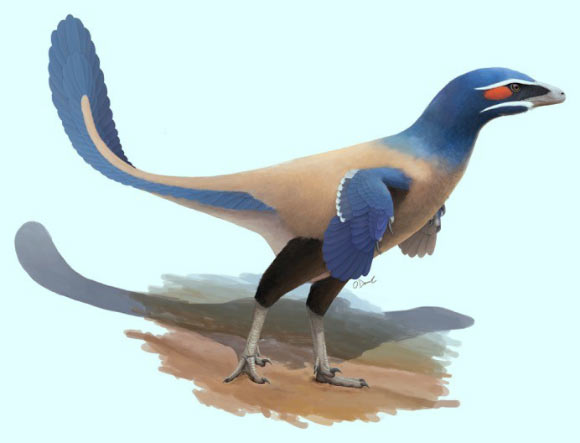A team of paleontologists from the Philip J Currie Dinosaur Museum, the University of Toronto and the Royal Ontario Museum has added another species of bird-like feathered dinosaur to the prehistoric catalog, and this one was found in Canada.
Albertavenator curriei, as the paleontologists call the new dinosaur species, belongs to Troodontidae, a family of bird-like theropod dinosaurs.
It lived about 71 million years ago (Cretaceous period) in what is now Alberta, Canada.
Its specific name, curriei, honors the renowned Canadian paleontologist Dr. Philip J. Currie.
The bones of Albertavenator curriei were found in the badlands surrounding the Royal Tyrrell Museum, which Dr. Currie played a key role in establishing in the early 1980s.

Comparison of 3D frontal models in dorsal, lateral, ventral, medial, anterior, and posterior, respectively, of Albertavenator curriei (top) and Troodon inequalis. Abbreviations: fc – frontal midline contact, lc – lacrimal contact with frontal, lcb – lacrimal buttress, lsc – laterosphenoid contact with frontal, nc – nasal contact with frontal, or – orbital rim, pc – parietal contact with frontal, pl – parietal lappet, poc – postorbital contact with frontal, scf – supraciliary foramen. Scale bar – 1 cm. Image credit: Evans et al, doi: 10.1139/cjes-2017-0034.
Scientists initially thought that the dinosaur’s bones belonged to its close relative, Troodon inequalis, which lived around 5 million years earlier.
Both bird-like creatures walked on two legs, were covered in feathers, and were about the size of a person.
New comparisons of bones forming the top of the head reveal that Albertavenator curriei had a distinctively shorter and more robust skull than Troodon.
“The delicate bones of these feathered dinosaurs are very rare,” said Dr. David Evans, Temerty Chair and Senior Curator of Vertebrate Paleontology at the Royal Ontario Museum and lead author of a new paper in the Canadian Journal of Earth Sciences describing the discovery.
“We were lucky to have a critical piece of the skull that allowed us to distinguish Albertavenator curriei as a new species.”
“We hope to find a more complete skeleton of Albertavenator curriei in the future, as this would tell us so much more about this fascinating animal.”
“It was only through our detailed anatomical and statistical comparisons of the skull bones that we were able to distinguish between Albertavenator curriei and Troodon,” added co-author Thomas Cullen, a Ph.D. student at the University of Toronto.
“This discovery really highlights the importance of finding and examining skeletal material from these rare dinosaurs,” said co-author Dr. Derek Larson, Assistant Curator of the Philip J. Currie Dinosaur Museum.
_____
David C. Evans et al. A new species of troodontid theropod (Dinosauria: Maniraptora) from the Horseshoe Canyon Formation (Maastrichtian) of Alberta, Canada. Canadian Journal of Earth Sciences, published online July 17, 2017; doi: 10.1139/cjes-2017-0034








